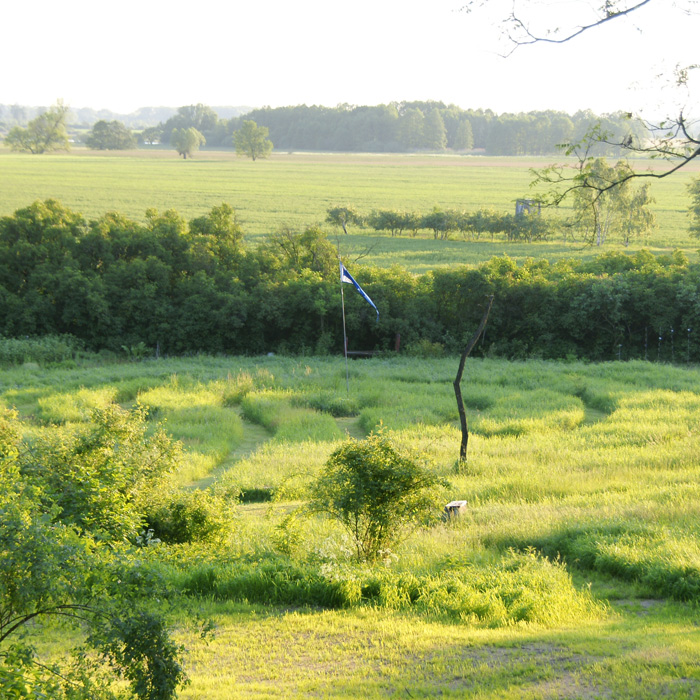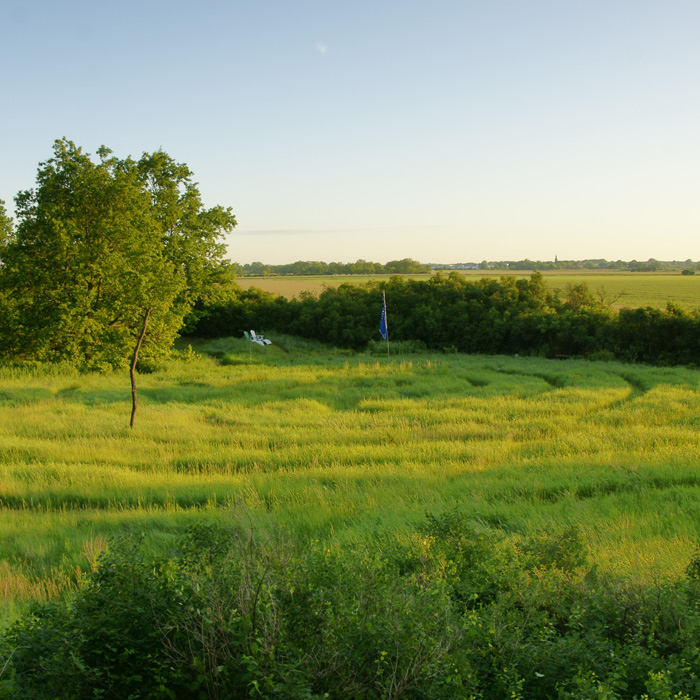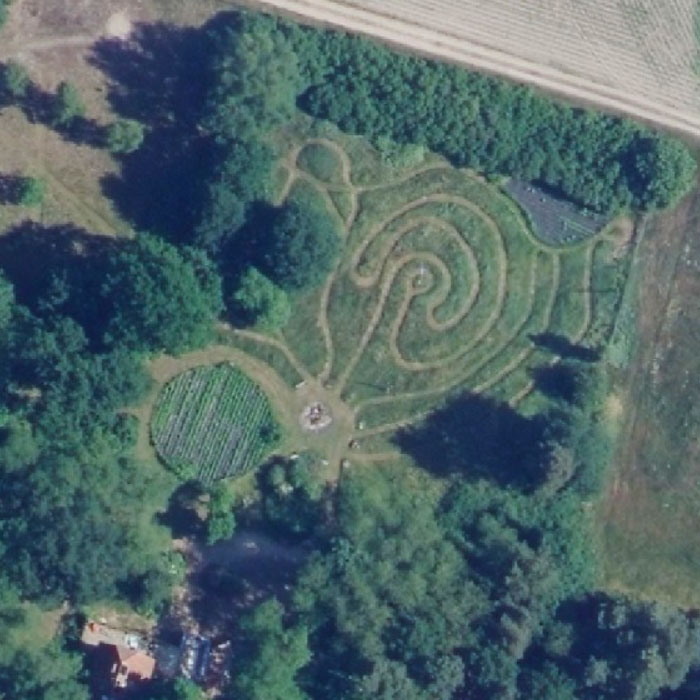[:de]Das Rasenlabyrinth liegt am unteren Ende des Gartens. Im Norden wird es durch eine Wildhecke zur freien Landschaft begrenzt.
Das Kretische Labyrinth hat seinen Ursprung von einem eiszeitlichen Alpenvolk aus der Lombardei, den Camuni. Die in den Felsen geritzten Zeichnungen werden auf das 7. Jahrtausend vor Chr. datiert.
Ein Labyrinth hat im Gegensatz zu einem Irrgarten einen Weg hinein und einen Weg hinaus. Es entstehen keine Sackgassen. Bei den Kelten und den Kretern taucht das Labyrinth in den Mythologien auf. Die Bedeutung von Labyrinthen ist in den Kulturen ähnlich, verweist es doch auf den Lebensweg, die Besinnung auf das Leben als göttliche Bestimmung oder das Beschreiten der labyrinthischen Wege als meditative Übung des Augenblicks.
Die Wege des Labyrinthes werden regelmäßig gemäht. Dadurch entstehen in den ungemähten Stücken ganz eigene Pflanzengesellschaften. Von oben ist das Labyrinth gut zu erkennen.
Am Rande liegt der Feuerplatz.[:en]The turf labyrinth is located at the bottom of the garden. In the North it is bound to the open countryside by a wild hedge.
The Cretan labyrinth has its origin from a glacial Alpine people from Lombardy, the Camuni. The drawings carved into the rock are dated from the 7. Millennium BC.
Unlike a maze, a labyrinth has a way in and a way out. There are no dead ends. The labyrinth appears in the mythologies of the Celts and the Cretans. The significance of labyrinths is similar in the cultures, since it refers to the path of life, the reflection on life as a divine provision or recourse to the labyrinthine ways acts as a meditative exercise of the moment.
This results in very peculiar plant communities in the uncut pieces.
The paths of the labyrinth are regularly mowed. This results in the uncut pieces of very peculiar plant communities. The labyrinth is clearly visible from the top.
The fireplace is located on the edge.[:]




